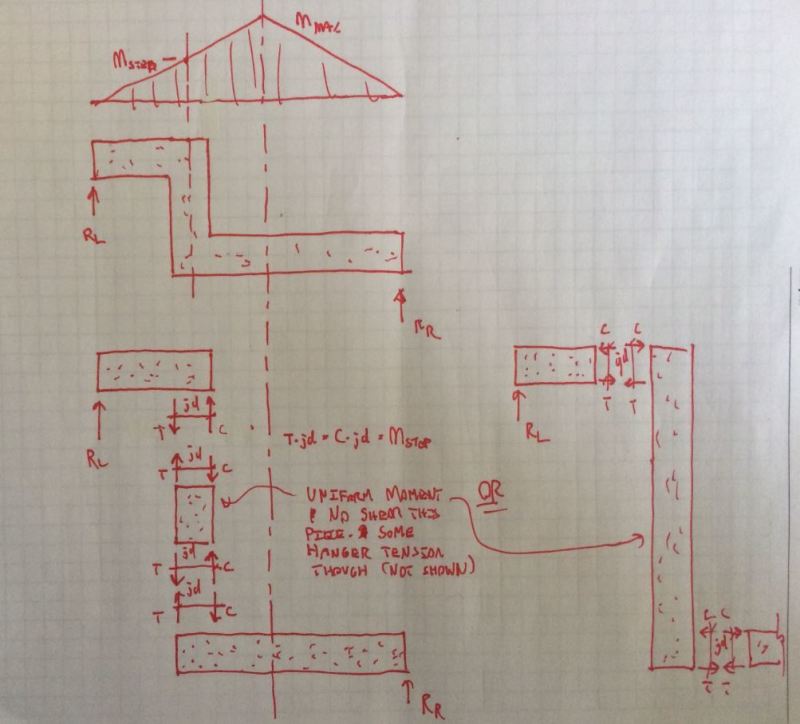SteynvW
Civil/Environmental
- Feb 1, 2016
- 108
Hi all
Me and a couple of engineering friends were arguing about the deflection
of a slab with a step in it compared to one without a step. (See attached sketch).
My gut feeling is that it will create extra stiffness and reduce the deflection if
it has a step. I will however never take this into consideration if I designed such a
slab.
What are your thoughts?
Me and a couple of engineering friends were arguing about the deflection
of a slab with a step in it compared to one without a step. (See attached sketch).
My gut feeling is that it will create extra stiffness and reduce the deflection if
it has a step. I will however never take this into consideration if I designed such a
slab.
What are your thoughts?



